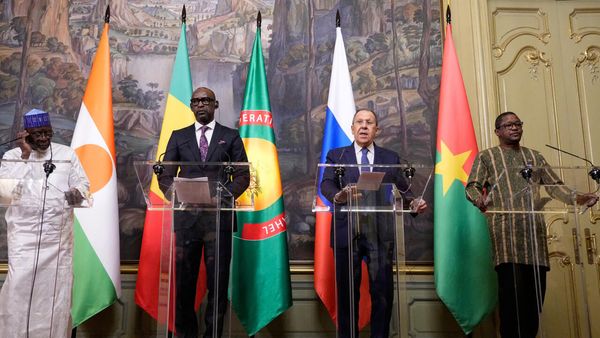
Telenor Connexion is a Business Reporter client.
Urban mobility is a multidimensional concept that includes the movement of people and goods within a city, influenced by a multitude of factors like infrastructure, technology, politics and culture, making it an intricate subject with an ever-evolving future fuelled by advanced technology.
Today, about 56 per cent (around 4.4 billion people) of the world’s population lives in urban areas, making cities denser than ever before. By 2050, the urban population will more than double with almost seven in 10 people living in cities.
This alone spells plenty of challenges for urban mobility planning.
Add to this the fact that society at large is struggling with inflation and rising costs, particularly in the transportation sector, and it becomes increasingly challenging for people to move around cities affordably and sustainably.
Since urban mobility forms the backbone of modern smart cities, addressing the complex challenges associated with it and adapting to the evolving requirements are crucial for ensuring the quality of life of city inhabitants.
Assessing the current challenges
One of the biggest challenges we face today is the uncertain economic environment due to an anticipated global recession, fuelled by geopolitical conflicts and business slowdowns across the globe.
Increasing food prices and energy costs have led to the highest rates of inflation since the 1980s, causing a cost-of-living crisis. In December 2022, the annual inflation rate in the EU was 10.4 per cent, which has led to increased interest rates.
In terms of urban mobility, this slowing global growth puts further pressure on the average consumer, affecting their spending power.
Therefore, an average city commuter looks for more cost-efficient alternatives to private cars, with many of them turning to public transport, shared mobility or micro-mobility services.
While the increasing demand for micro-mobility services (such as e-scooters and e-bikes) and shared mobility services (such as carpooling) should be positive news for the sector, the companies that provide them struggle with challenges of their own.
Many companies behind these services are finding their business models under pressure thanks to regulatory restrictions, rising interest rates, soaring inflation and a turbulent stock market.
There’s also the fact that with funding drying up, these companies can no longer offer the same subsidised costs to commuters as they used to, resulting in slightly higher fares that are not much cheaper than a traditional taxi ride or public transport.
Moreover, governments worldwide are implementing strict legislation to curb emissions in order to achieve the long-term goals of the Paris Agreement. This affects the transport sector the most since it is responsible for almost a quarter of greenhouse gas emissions.
In this situation, electric vehicles can provide a respite and prove to be ideal for such a scenario by offering a more sustainable mode of transport that reduces emissions for the urban population. After all, in Europe, the revenue for the electric vehicle market is expected to reach $177.3 billion in 2023, with a projected annual growth rate (CAGR 2023-2027) of 17.05 per cent. However, increasing oil and gas prices have led to a spike in electricity prices as well.
To address all these challenges of urban mobility, the whole transport system needs to act as one ecosystem with several transport alternatives interlinking. Fragmentation and a lack of holistic solutions often are the biggest deterrent to having convenient, sustainable and cost-effective urban mobility. For the ecosystem to work, all parts need to be intelligently connected by IoT.
IoT as a key enabler
An IoT-enabled intelligent transportation ecosystem has the potential to revolutionise urban mobility by bridging traditional infrastructure such as public transport with new players driven by tech. Such an ecosystem would create new opportunities for all stakeholders, including IoT technology companies that offer solutions to enhance public transportation to better meet the needs of consumers, resulting in improved efficiency and effectiveness.
IoT technology enables real-time tracking of various modes of transportation by collecting and sharing relevant data and linking different systems to dynamically improve services. For example, sensors can monitor the service needs of a vehicle to avoid unnecessary downtime, while users can access an app that suggests the most efficient route using different modes of transportation.
IoT in combination with well-designed fleet management software can also tackle other challenges by accurately tracking vehicles, ensuring timely maintenance and optimised routes, collecting usage data to improve service, and using smart charging and smart grid integration. This reduces costs, optimises traffic flow and reduces downtime, and makes transportation more affordable for commuters in smart cities.
“The prospect is that when traditional infrastructure, such as public transport, interacts with new actors driven by strong technological growth, completely new conditions are created for everyone involved,” says Martin Whitlock, CTO at Telenor IoT. “Here is an opportunity for innovative technology companies to come up with solutions that help the consumer save energy, time and money, while at the same time optimising public transport for the public’s needs.”
There are many success stories
Many companies have successfully leveraged IoT to achieve these benefits, including E-REDES, Portugal’s distribution system operator. E-REDES is facing a growing demand for electric vehicle charging stations in the country. With over 12 per cent of new car sales being electric in 2020, grid capacity may become insufficient to power the required number of charging stations in many areas. To address this challenge, E-REDES has installed a smart charging site consisting of 18 charging points connected to the GreenFlux platform and a local smart meter that measures energy consumption. The smart charging algorithm uses solar panels installed on the building’s roof to increase available power capacity. This smart charging system can reduce power to EVs if the consumption of the building is high. The organisation is also planning to introduce an application to help users find available charging stations in all company buildings across Portugal.
Another success story is New York City Transit Authority which has implemented a smart maintenance system that uses IoT sensors to monitor the condition of subway tracks and equipment in real time. The system helps identify potential maintenance issues before they become major problems, resulting in improved reliability and reduced downtime.
In Singapore, IoT is being used to optimise the city’s bus network. The Land Transport Authority has installed IoT sensors on 5,000 buses to collect real-time data on their locations, speeds and passenger loads. This data is used to optimise routes and schedules, reduce congestion and improve the overall efficiency of the bus network.
There are many more examples. But what’s clear to see is that to overcome the ever-evolving challenges of a turbulent economy, it’s crucial to integrate IoT and other advanced technologies to achieve flexible, efficient, affordable and sustainable means of transportation.
Organisations that open up and collaborate across the ecosystem will be the winners in the long run.
“We see that societal factors are affecting urban mobility patterns more than ever before. This means that demand for flexible, efficient, affordable and sustainable means of transportation is increasing far too rapidly for companies to meet on their own,” says Mats Lundquist, CEO at Telenor Connexion and Head of Telenor IoT. “Organisations and industries that work together to connect their services across ecosystems will find themselves perfectly placed to benefit from these shifting trends.”
For many years Telenor IoT has partnered with Accenture to examine the drivers for change affecting the world around us. Together, these two companies produce the IoT Prediction Report, an annual publication addressing the impact of current global factors on the future of IoT.
This year’s report explores how IoT will play a critical role in overcoming many of the current challenges associated with urban mobility. You can check out the full report here.







